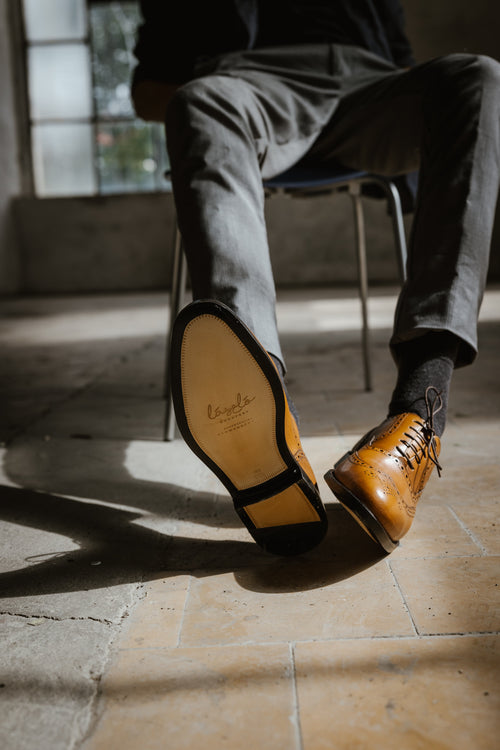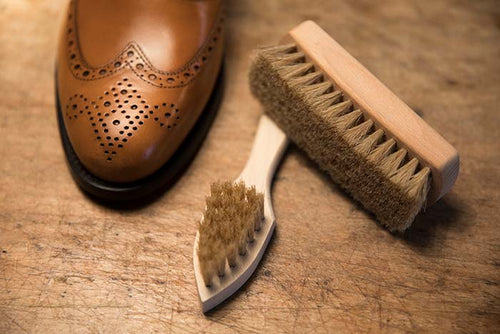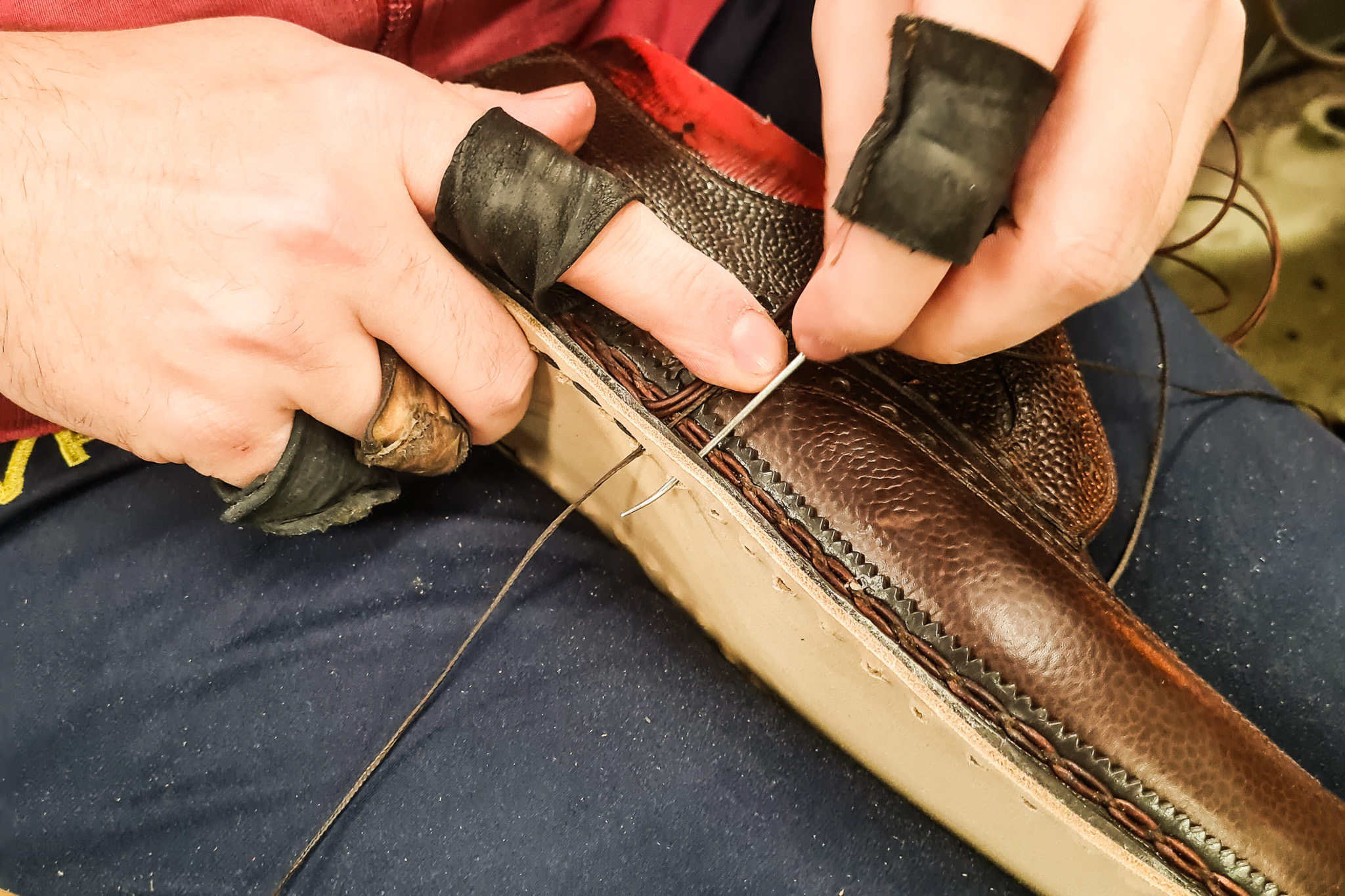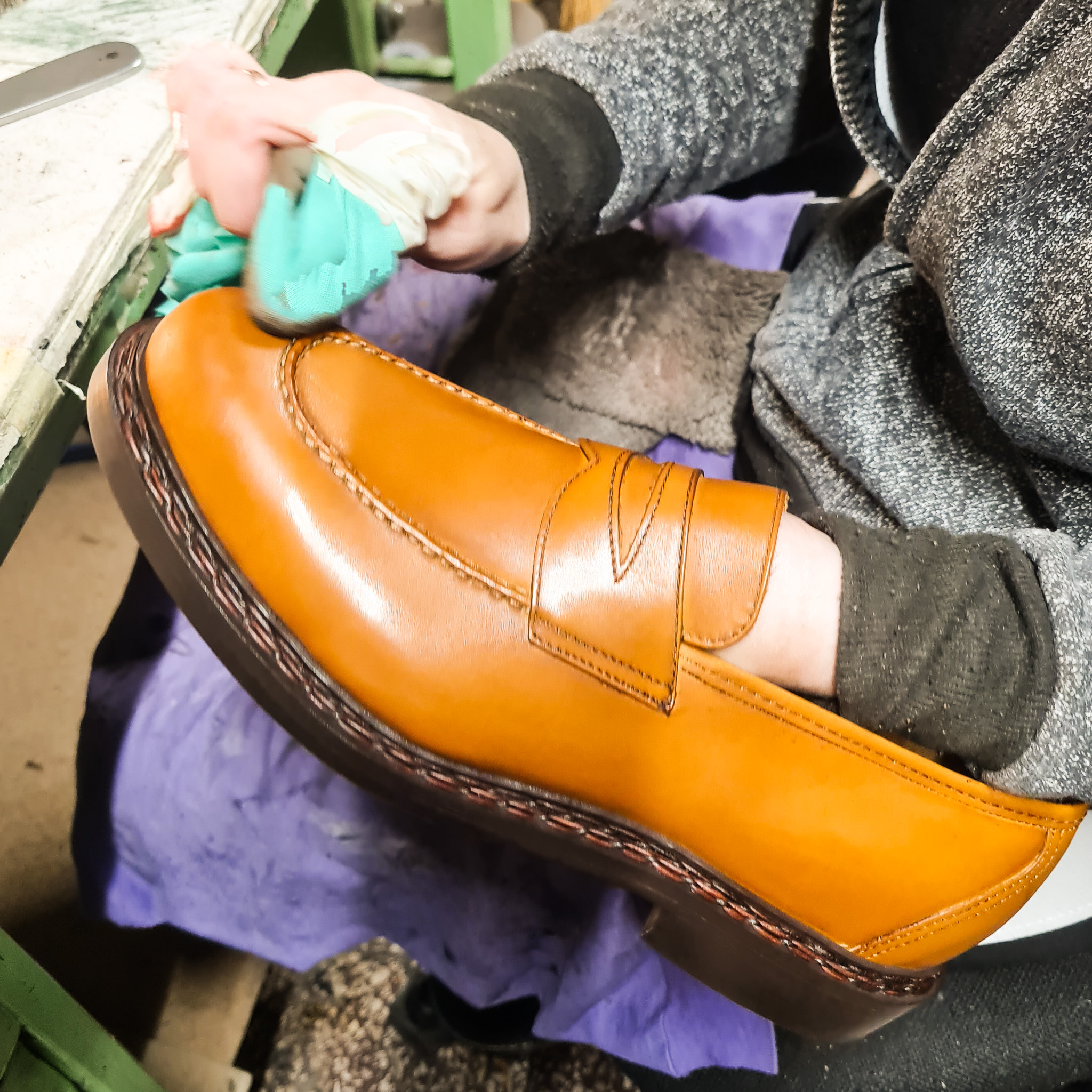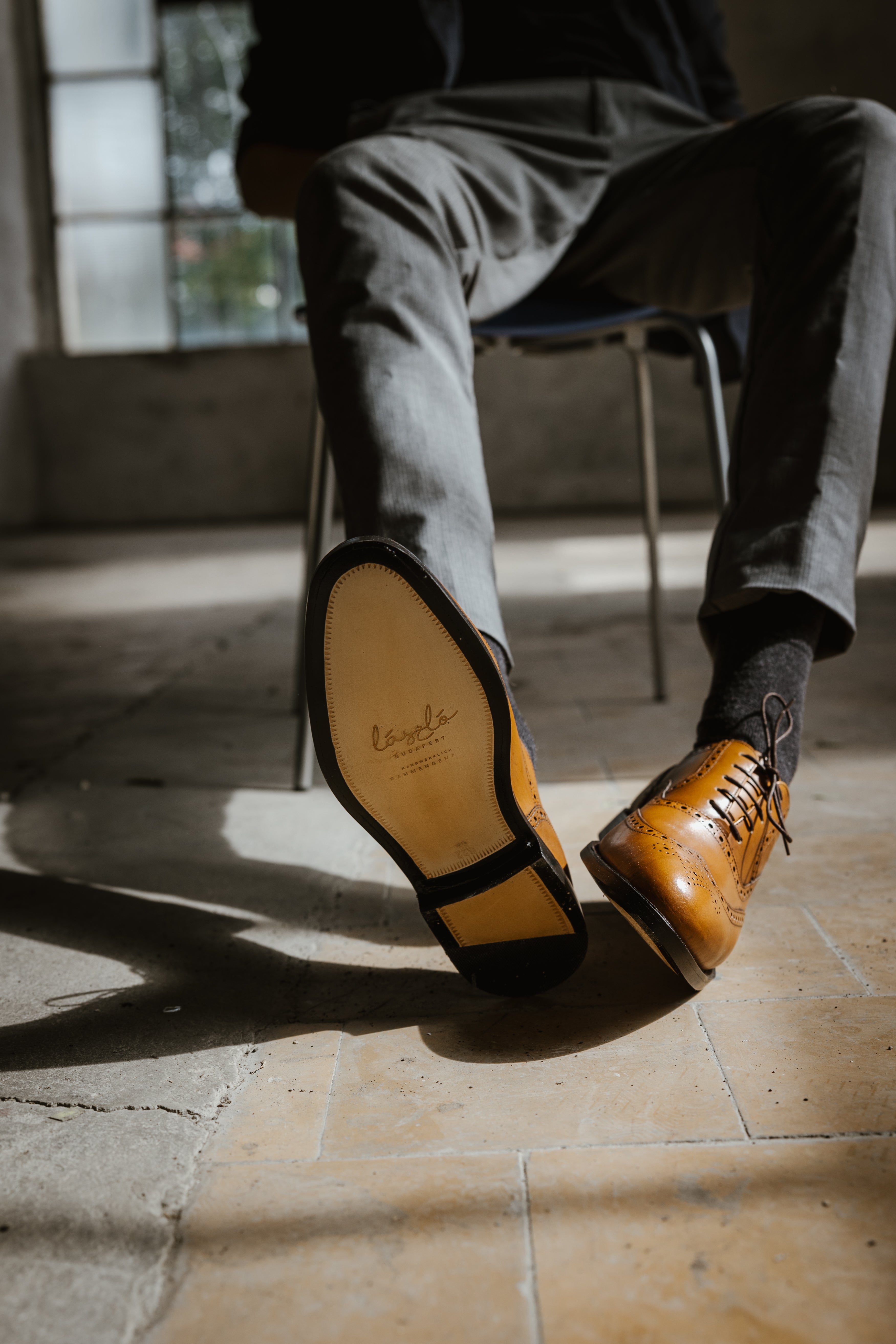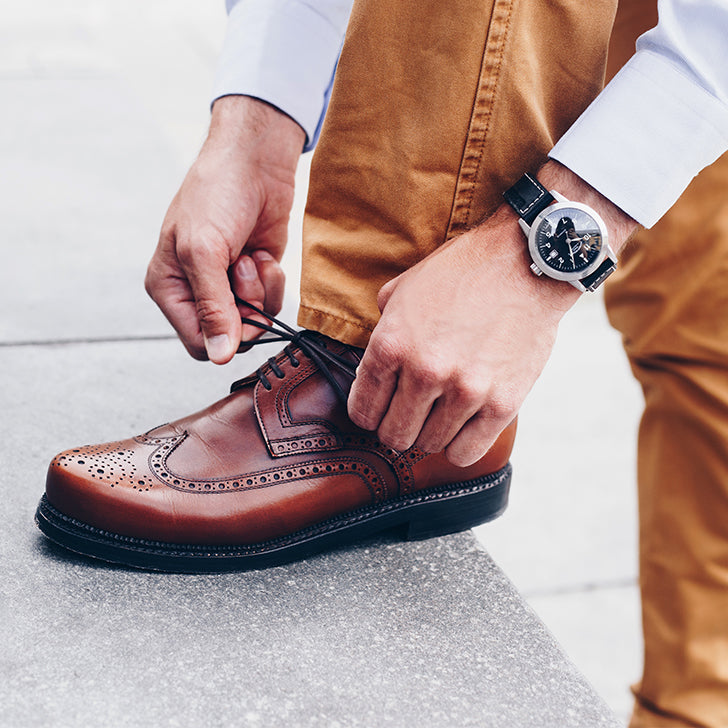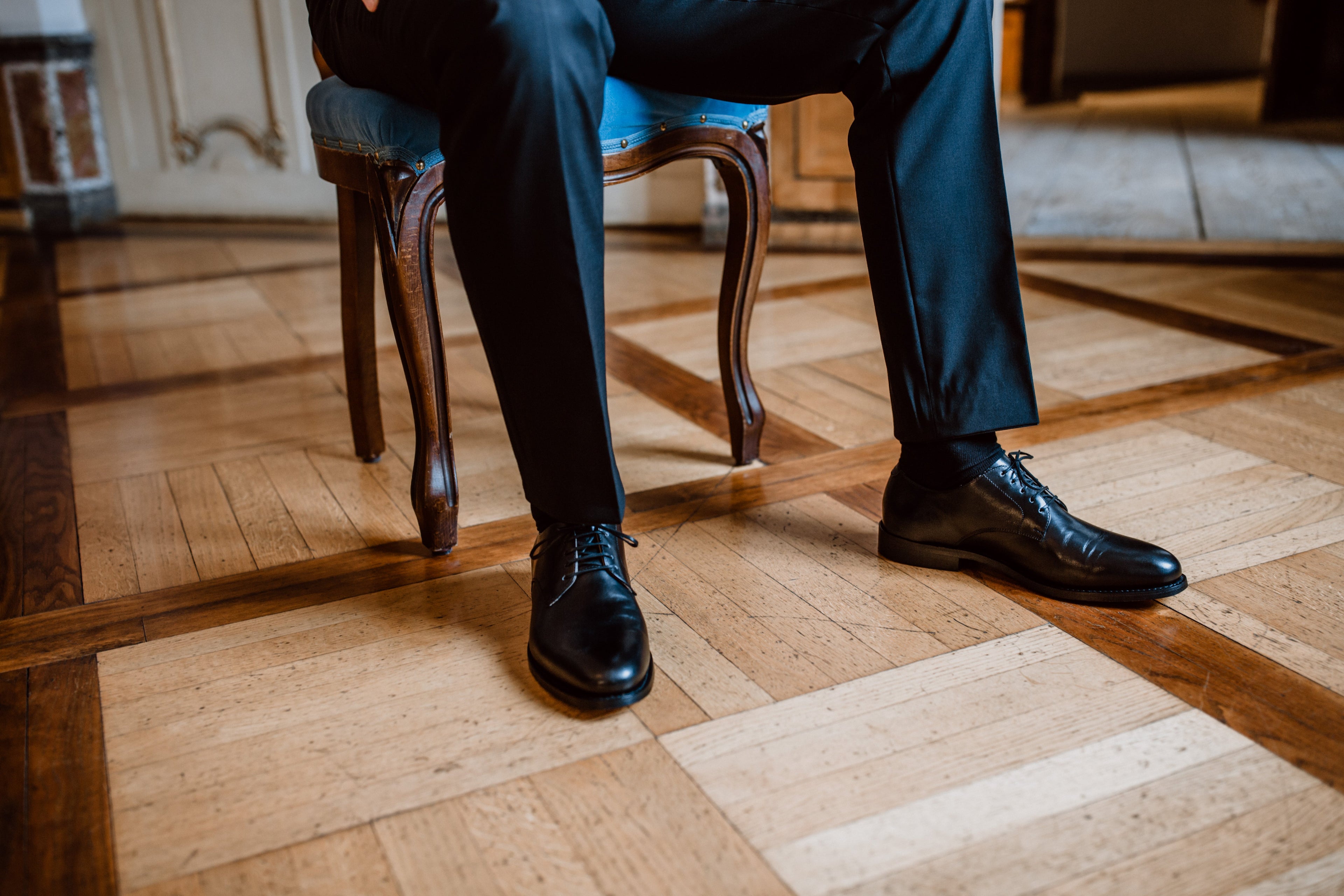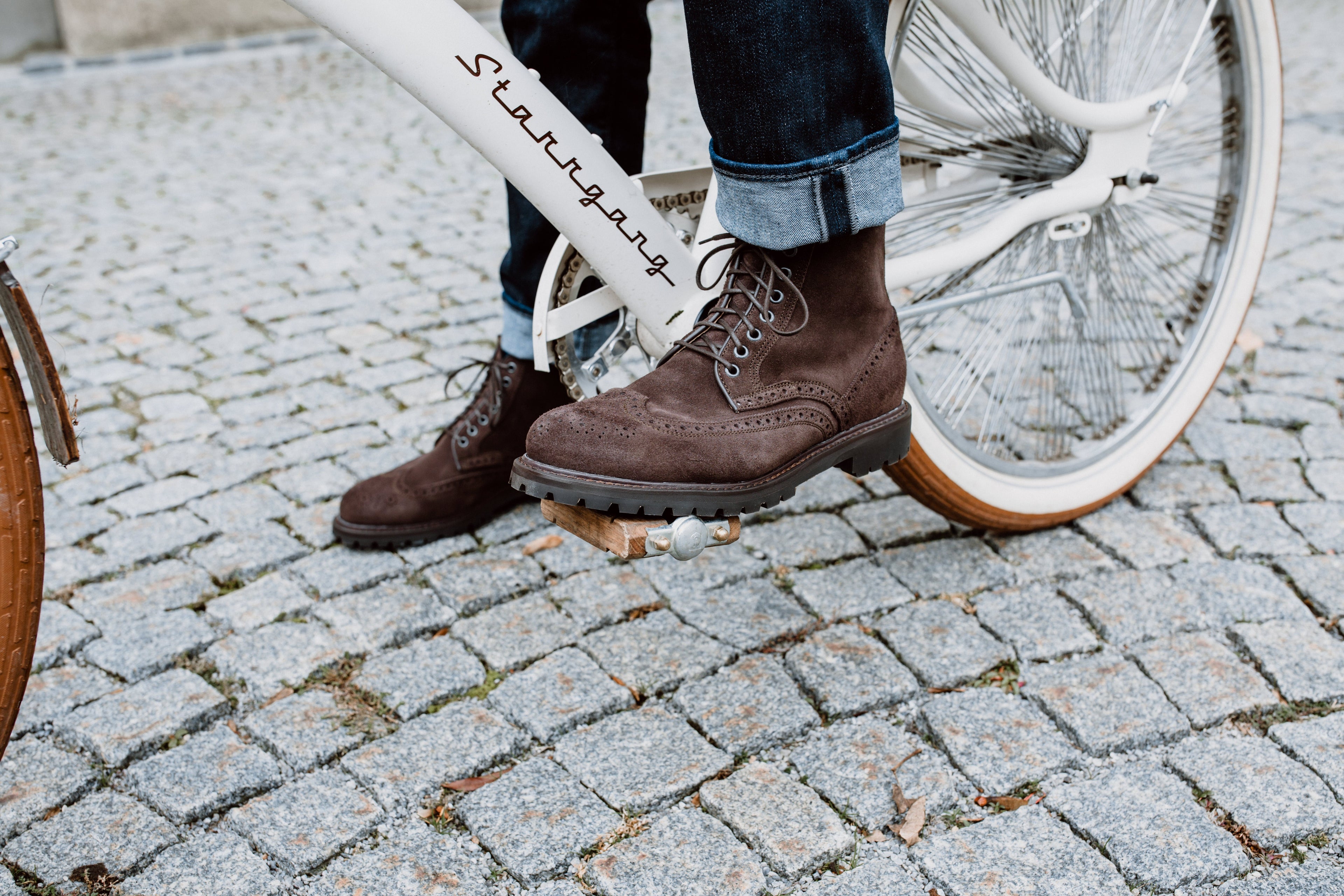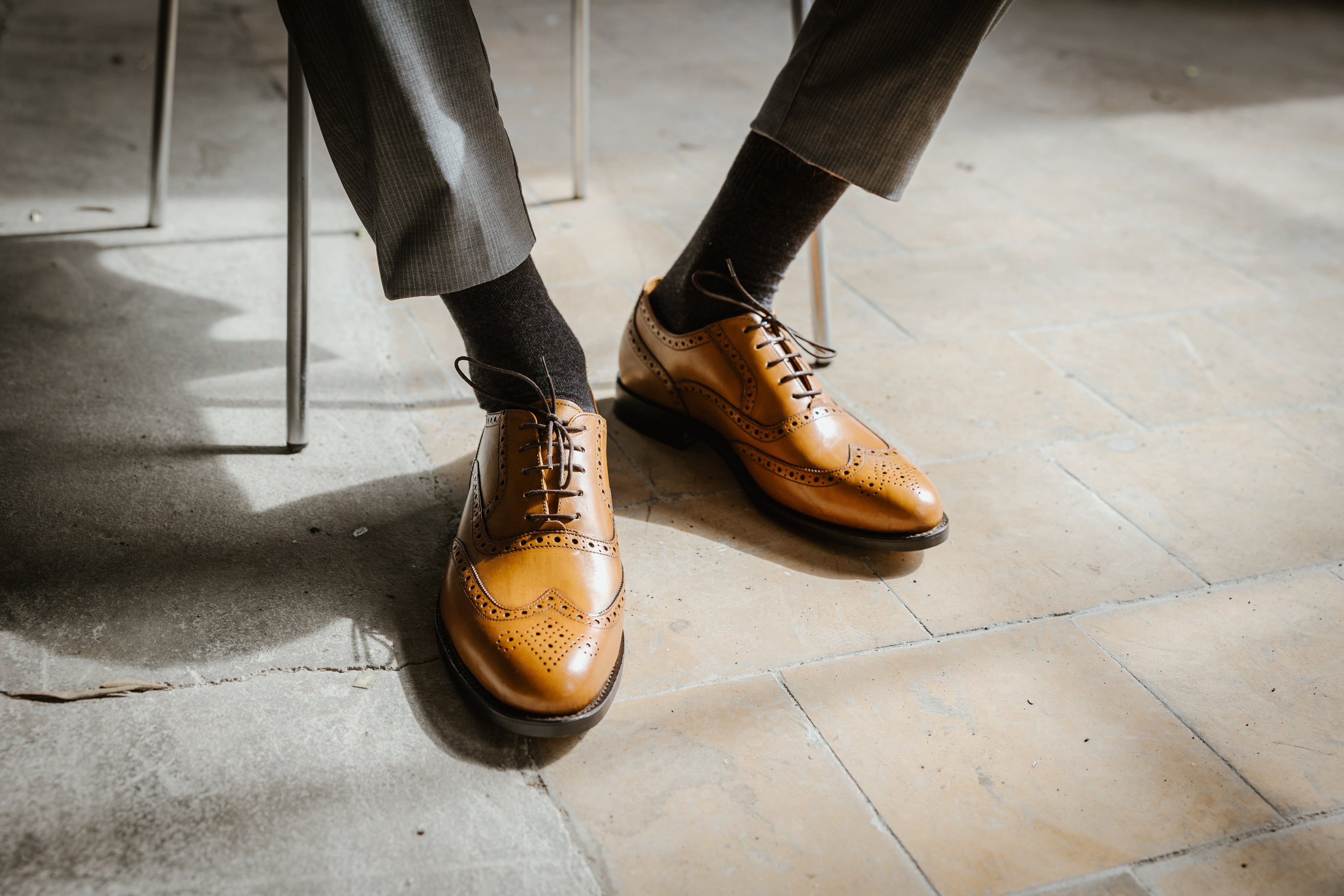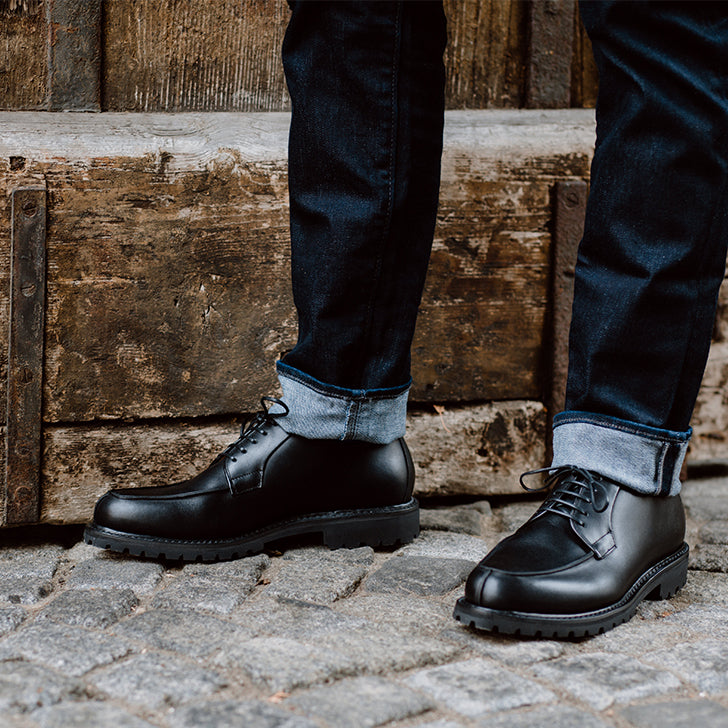Die Zopfrahmennaht bei László Budapest - ein Meisterstück der Schuhmacherkunst

Die Welt der hochwertigen Lederschuhe ist voller faszinierender Techniken und einzigartiger Details, die jedes Paar zu einem Kunstwerk machen. Eine dieser außergewöhnlichen Techniken ist die Zopfnaht, ein Symbol für exquisite Handwerkskunst und zeitlose Eleganz. Bei László Budapest wird diese traditionelle Nahttechnik meisterhaft umgesetzt und verleiht jedem Schuh eine unverwechselbare Identität. In den Schuhen von László Budapest verbinden sich jahrhundertealtes Wissen und moderne Raffinesse zu einem harmonischen Ganzen. Die Zopfrahmennaht ist nicht nur ein funktionales Element, sondern auch ein ästhetisches Statement, das die Marke László Budapest in der Welt der Luxusschuhe auszeichnet. Tauchen Sie ein in die Welt dieser einzigartigen Technik und entdecken Sie, was sie so besonders macht.
Die Zopfnaht - Was macht sie so besonders?
Die Zopfrahmennaht, auch Flechtnaht genannt, ist eine spezielle Nahttechnik, die den Rahmen von zwiegenähten Schuhen verstärkt. Sie verleiht dem Schuh nicht nur zusätzliche Stabilität, sondern auch eine markante, dekorative Optik, die von Kennern sofort erkannt und geschätzt wird.
Zwiegenähte Schuhe - Die Basis der Rahmenzwiegenaht
Zwiegenähte Schuhe zeichnen sich durch zwei Hauptnähte aus:
Innennaht: Diese Naht verbindet das Oberleder mit der Brandsohle und sorgt für eine stabile Basis.
Äußere Naht: Diese Naht verbindet den Rahmen mit der Laufsohle und bildet die Basis für die Ziernaht.
Die Zopfrahmennaht wird in die Außennaht eingeflochten und verstärkt so die Verbindung zwischen Rahmen und Sohle, was die Haltbarkeit und Flexibilität deutlich erhöht.
Der Weg zur Perfektion: Arbeitsschritte bei der Herstellung der Zopfrahmennaht

Vorbereitung des Materials
Oberleder: Hochwertiges, pflanzlich gegerbtes Leder wird sorgfältig ausgewählt. Dieses Leder zeichnet sich durch seine natürliche Haltbarkeit und Atmungsaktivität aus.
Rahmenleder: Für den Rahmen wird robustes Leder verwendet, das für zusätzliche Stabilität sorgt.
Fäden: Gewachste Leinenfäden werden bevorzugt, da sie reißfest und feuchtigkeitsbeständig sind.

Anreißen und Vorheften
Stichrad: Mit diesem Werkzeug werden die Nahtlöcher entlang der Rahmenkante genau markiert. Die Abstände müssen gleichmäßig und genau sein, um eine perfekte Flechtnaht zu erhalten.
Ahle: Mit einer spitzen Ahle werden die vorgezeichneten Löcher gebohrt. Die Tiefe und der Durchmesser der Löcher müssen exakt sein, um die spätere Naht aufnehmen zu können.

Erste Naht (Zwiegenähte)
Verbindung von Oberleder und Brandsohle: Die erste Naht wird sorgfältig ausgeführt, um eine stabile Basis zu schaffen. Diese Naht ist entscheidend für die spätere Haltbarkeit des Schuhs.
Zusammennähen des Rahmens: Der Rahmen wird mit der Brandsohle verbunden, wobei darauf zu achten ist, dass die Naht fest und gleichmäßig ist.

Flechten der Rahmennaht
Flechten der Naht: Die Zopfrahmennaht wird von Hand entlang der Außennaht des Rahmens geflochten. Dabei wird der gewachste Leinenfaden mehrmals durch die vorgebohrten Löcher gezogen und miteinander verflochten. Das erfordert höchste Präzision und Erfahrung.
Spannung und Gleichmäßigkeit: Der Faden muss gleichmäßig gespannt und das Flechtmuster exakt ausgeführt werden, um ein sauberes und ästhetisch ansprechendes Ergebnis zu erzielen.

Fertigstellung und Verstärkung
Verknotung und Veredelung: Nach Fertigstellung der Ziernaht werden die Fadenenden sauber verknotet und in das Leder eingearbeitet. Zusätzliche Veredelungsmaßnahmen wie das Auftragen von Lederbalsam und das Polieren sorgen für eine langlebige und ästhetische Oberfläche.
Einzigartige Ästhetik -Die optische Pracht der Zopfnaht
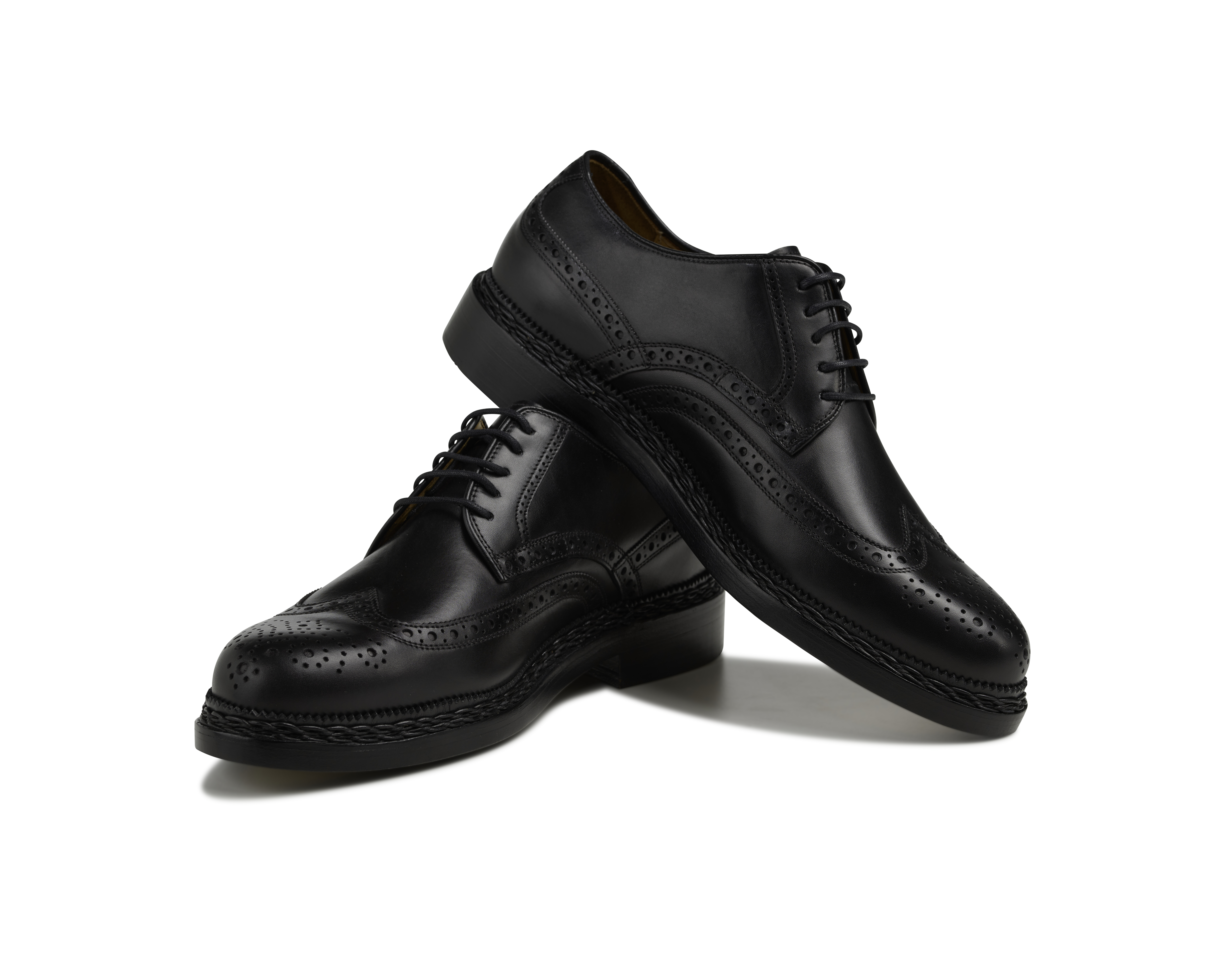
Die Kunst des ersten Eindrucks
Die Zopfrahmennaht ist ein herausragendes Beispiel für die Handwerkskunst, die bei László Budapest gepflegt wird. Schon auf den ersten Blick erkennt man die unvergleichliche Schönheit dieser Nahttechnik. Die fein verflochtenen Fäden, die sich harmonisch in das Leder einfügen, bilden ein Muster, das sofort ins Auge fällt. Diese Flechtstruktur ist nicht nur ein technisches Highlight, sondern auch ein ästhetisches Statement.
Ästhetische Details: Der Blick in die Tiefe
Jeder Schuh von László Budapest, der mit einer Zopfrahmennaht versehen ist, erzählt eine Geschichte von Sorgfalt und Präzision. Die symmetrisch und gleichmäßig verteilten Fäden, die in perfekter Harmonie verlaufen, zeugen von der Geduld und dem Können des Schuhmachers. Die Naht wirkt wie ein kunstvolles Band, das den Schuh umschließt und ihm eine einzigartige Note verleiht.
Farbenspiele und Materialkombinationen
László Budapest versteht es meisterhaft, die Zopfnaht in verschiedenen Farbkombinationen zu präsentieren. Die Auswahl an gewachsten Fäden reicht von klassischen Farben wie Schwarz und Braun bis hin zu auffälligen Tönen wie Bordeaux oder Marineblau. Diese Farben harmonieren perfekt mit dem hochwertigen Leder und verleihen jedem Schuh eine individuelle Note. Die Möglichkeit, verschiedene Lederarten und -farben zu kombinieren, macht die Zopfnaht zu einem flexiblen Gestaltungselement, das sowohl traditionelle als auch moderne Designs ergänzt.

Textur und Haptik: Ein Erlebnis für die Sinne
Die Zopfrahmennaht bei László Budapest ist nicht nur ein visuelles Highlight, sondern auch ein haptisches Erlebnis. Die feinen Erhebungen und die strukturierte Oberfläche der Naht laden dazu ein, den Schuh zu berühren und die handwerkliche Qualität zu spüren. Diese taktile Dimension verstärkt die Wertschätzung für die Detailarbeit und die sorgfältige Ausführung, die in jeden Schuh einfließen.
Harmonie und Balance
Die Zopfrahmennaht trägt maßgeblich zur ästhetischen Balance des gesamten Schuhs bei. Sie schafft eine visuelle Linie, die den Blick des Betrachters führt und die Konturen des Schuhs betont. Durch die harmonische Integration in das Design wird die Naht zu einem integralen Bestandteil des Gesamtkunstwerks und nicht nur zu einem funktionalen Detail.
Ein Zeichen von Exklusivität
Schuhe von László Budapest mit einer Zopfrahmennaht sind ein Symbol für Exklusivität und Raffinesse. Diese spezielle Nahttechnik ist ein sichtbarer Beweis für die handwerkliche Qualität und die Hingabe, die in jeden Schuh einfließen. Für Kenner und Liebhaber hochwertiger Schuhe ist die Zopfrahmennaht ein Zeichen von Luxus und feinstem Geschmack. Sie erkennen sofort den Unterschied zwischen maschinell gefertigten und handgefertigten Schuhen und wissen die einzigartige Ästhetik der Zopfrahmennaht zu schätzen.
Die Zopfrahmennaht als Design-Element
Bei László Budapest wird die Zopfrahmennaht nicht nur als funktionales Element betrachtet, sondern auch als wesentlicher Bestandteil des Designs. Sie verleiht jedem Schuh eine einzigartige Identität und ermöglicht es den Designern, kreative und individuelle Modelle zu schaffen. Ob klassische Businessschuhe oder elegante Freizeitschuhe, die Zopfrahmennaht fügt jedem Stil eine besondere Note hinzu und macht jedes Paar Schuhe zu einem Unikat.
Die Philosophie von László Budapest: Die Zopfrahmennaht als Markenzeichen
Bei László Budapest steht die Zopfrahmennaht im Zentrum der Markenphilosophie. Sie symbolisiert höchste Handwerkskunst und eine tiefe Verbundenheit mit traditionellen Herstellungsmethoden. Jeder Schuh, der mit dieser Technik gefertigt wird, ist ein Meisterwerk, das die Geschichte und die Werte der Marke widerspiegelt.
Tradition und Innovation
Durch die Kombination von traditionellem Handwerk und modernem Design schafft László Budapest Schuhe, die nicht nur funktional und komfortabel, sondern auch ästhetisch ansprechend und langlebig sind. Die Zopfrahmennaht ist ein sichtbares Zeichen dieser Exzellenz und ein Beweis für das Engagement der Marke, nur die besten Materialien und Techniken zu verwenden.
Exklusivität und Qualität
Die Zopfrahmennaht ist mehr als nur ein Detail; sie ist ein Zeichen der Exklusivität und des unvergleichlichen Komforts. Für die Liebhaber hochwertiger Lederschuhe bietet sie einen unverkennbaren Hinweis auf die handwerkliche Qualität und die Liebe zum Detail.
